What's New
Displaying results 1731 - 1740 of 4922
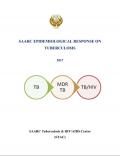
Resource | Publications,
This is the fifteenth Report on Tuberculosis (TB) situation of SAARC Region which is being published by SAARC Tuberculosis and HIV/AIDS Centre (STAC) in a series that started in 2003, which includes a compilation of regional and country-specific achievements, challenges and plans. The main purpose of the report is to provide a comprehensive and up-to-date assessment of the TB epidemic and progress made in TB care and control at Global, SAARC Region and Member States level.
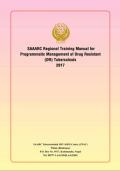
Resource | Guidelines,
SAARC Regional Training Manual on Programmatic Management of Drug Resistant TB (PMDT)” is a tool to facilitate SAARC Regional Training of Trainers on Management of Drug Resistant TB in SAARC region. This manual is prepared based on the Guidelines developed by Second Workshop to Develop Regional Guidelines for Treatment of MDR-TB and Third Meeting of Lab Directors from Reference Laboratories in SAARC Region held in Bhutan in 2007.
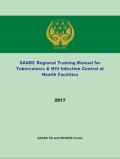
Resource | Guidelines,
This document is intended for conducting training thereby the development of human resource in TB and HIV/AIDS control and prevention. TB and HIV infection control are a combination of measures aimed at minimizing the risk of transmission within populations. Infection control requires and complements implementation of core activities in TB and HIV control and overall health-systems strengthening. It should be a major part of national infection prevention and control policies because it complements such policies – in particular, those that target including airborne infections.

Resource | Guidelines,
ART training manual has been prepared for medical personnel (Medical doctors, Health Assistants, Staff nurses and other HIV/AIDS care providers) who had taken basic HIV training. The training manual is developed to train and built capacity of doctors, nurses, health assistants and other HIV/AIDS care providers working in public as well as private health institutions in the region to diagnose and manage HIV and HIV-related diseases, including opportunistic infections (OI). Improving care for OIs and HIV-related conditions is a critical component of HIV programs.

Resource | Guidelines,
Due to social and biomedical advances, and increased funding, the response to HIV globally has yielded remarkable results. There are better, improved tools for screening, diagnostics, and treatment of HIV. Community responses to HIV are also established as the cornerstone of effective, equitable and sustainable HIV programmes. People living with HIV, or at increased risk of HIV play a critical role in demanding and delivering services, supporting systems for health, and reaching those who are most vulnerable to HIV, where state facilities cannot, or are not equipped to do so.
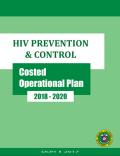
Resource | Guidelines,
The Health Sector Plan (HSP) HIV Prevention and Control Operational Plan 2018 - 2020 is a product of a series of consultations and participatory processes involving HIV program managers, representatives of the key populations (KP) communities, support civil society organizations (CSO), and the HIV Technical Working Group (TWG). These stakeholders are working from the national, regional, and local levels. The guidance of the National AIDS, STI Prevention and Control Program (NASPCP) and the Epidemiology Bureau (EB) was pivotal in crafting a realistic three-year HIV operational plan.
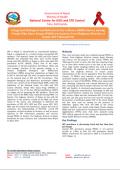
Resource | Fact Sheets,
This Integrated Biological and Behavioral Surveillance (IBBS) survey was carried out by the National Institute for Development and Research (NIDR) under the leadership of the National Center for AIDS and STD Control (NCASC). The existing National HIV and AIDS Strategy (2016-2021) identifies Female Sex Workers (FSWs) as one of the key affected populations (KAPs) at a higher risk of spreading the HIV epidemic. This is the sixth round of the IBBS survey conducted among FSWs in Kathmandu Valley.
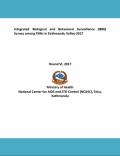
Resource | Publications,
This IBBS Survey among FSWs (FSWs) in Kathmandu Valley is the sixth round of survey. It was conducted first time in 2004. The survey was undertaken primarily to track the trend of HIV infection, to access information about the safe sex practices, sexual behavioral, knowledge of HIV and STI, explore the association between risk behaviors and infections with HIV or STI. More specifically, the survey was conducted to collect socio-demographic characteristics; alcohol and drug use and needle sharing behaviors; the experience of stigma, discrimination and physical, sexual and other forms of violence; and exposure to HIV and AIDs program.
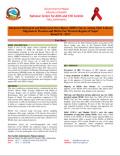
Resource | Fact Sheets,
Nepal is one of the major source countries of migrant laborers, helping to fulfill the demand of the rapidly industrializing countries in Asia and abroad. This is the sixth round of the Integrated Biological and Behavioral Surveillance (IBBS) survey conducted as a part of the national surveillance plan of NCASC among the Male Labour Migrants (MLMs). The objectives of the survey were to track the trend in the prevalence of HIV among MLMs and to explore the sexual risk behaviors associated with the HIV infection. This survey was carried during December 2016 to May 2017. This survey was carried out by the School of Planning Monitoring Evaluation and Research (SPMER) under the leadership of the National Centre for AIDS and STD Control (NCASC).
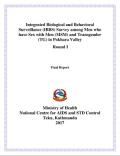
Resource | Publications,
HIV in Nepal is characterized as a concentrated epidemic. Nepal is categorized as a country facing concentrated HIV epidemic. IBBS surveys have been successfully conducted in various rounds in Nepal for the last about a decade among key populations at higher risk for HIV. This is the first round of IBBS surveys among MSM/TG of Pokhara Valley and carried out under the leadership of National Center for AIDS and STD Control (NCASC) with financial and technical support from Save the Children-Global Fund.





